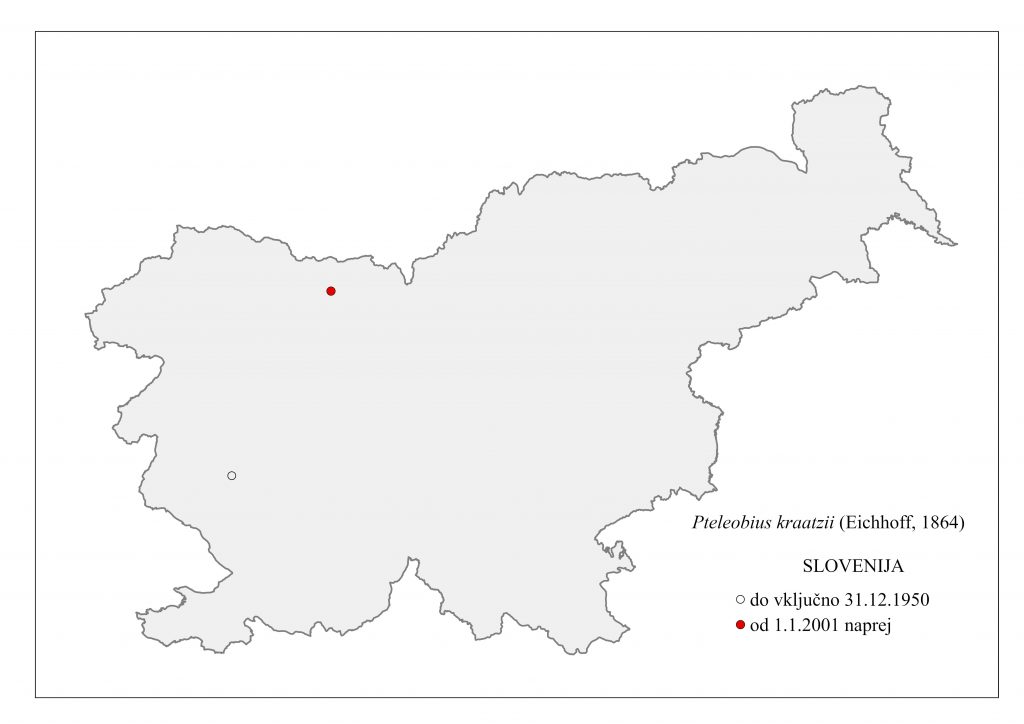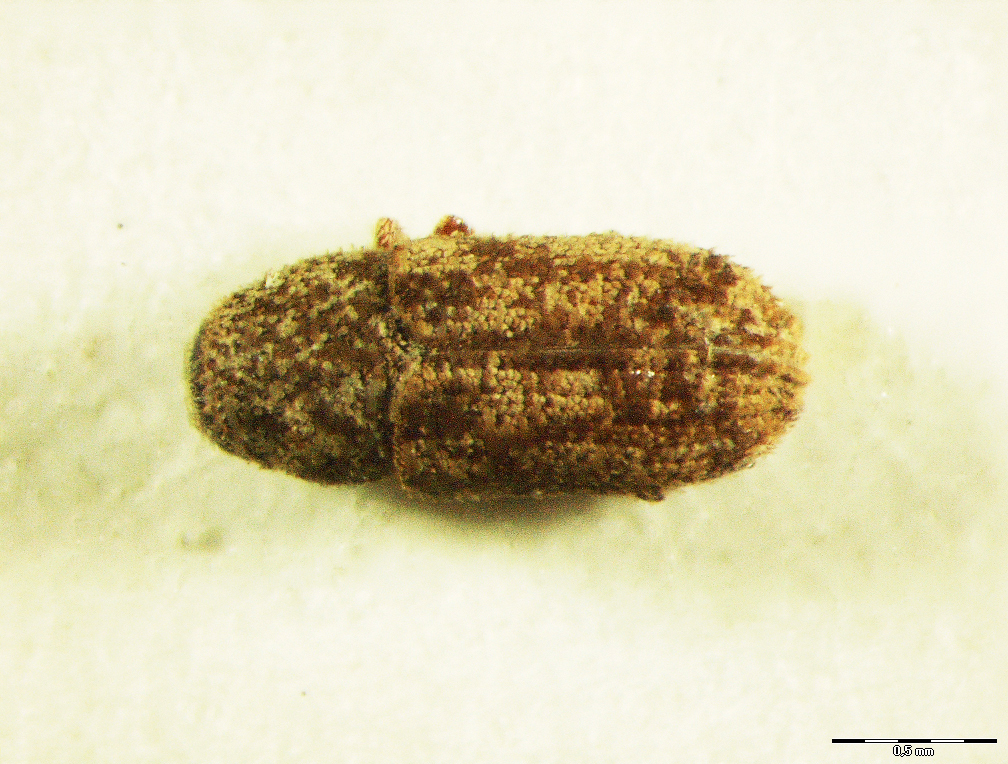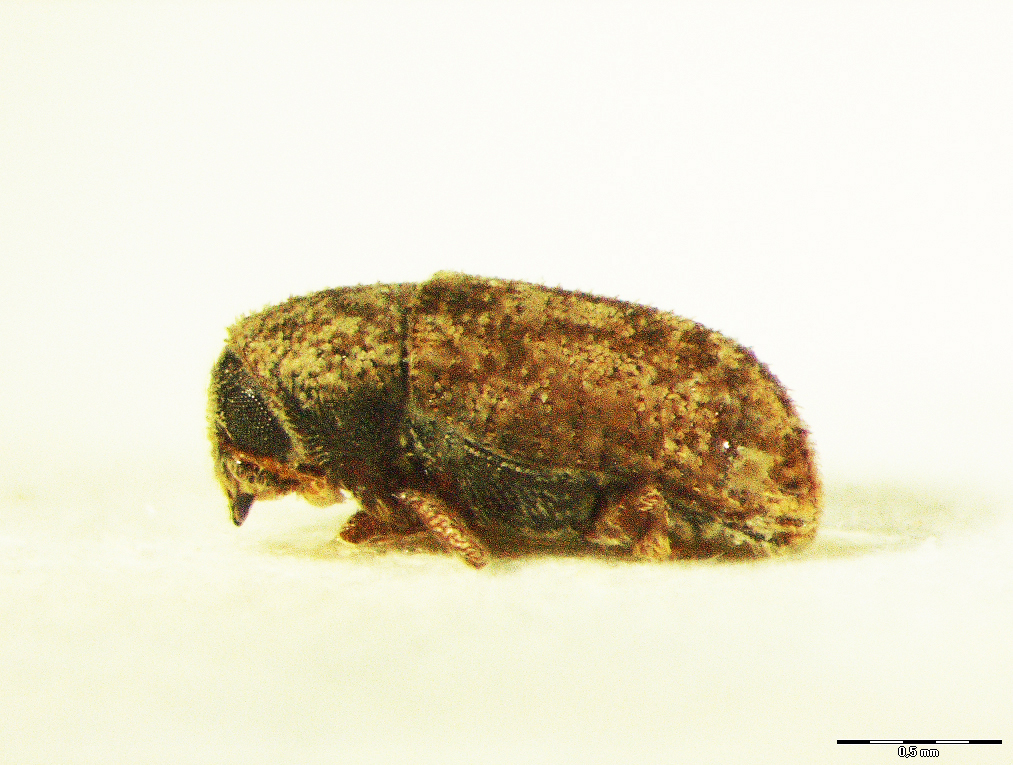06.01. Pteleobius kraatzii (Eichhoff, 1864)
Presence
E: AU BE BU BY CR CT CZ FR GE GR HU IT MC NL PL SK SL* SP ST SZ UK YU
N: AG CI
AP: TR
Figure 32: Pteleobius kraatzii, dorsal, lateral (Photo: Maja Jurc)
Older catalogs and keys – citations of name
Grüne 1979: P. kraatzii (Eichhoff, 1864); Freude, Harde, Lohse 1981: P. kraatzi Eichhoff; Pfeffer & Knížek 1993: P. kraatzii (Eichhoff, 1864); Pfeffer 1995: P. kraatzii (Eichhoff, 1864).

Figure 33: Pteleobius kraatzii, distribution map according to historical and recent data
Ecology and presence in Slovenia
The species is distributed in Europe, Asia Minor, Ukraine, the countries of the former Yugoslavia, North Africa and Asia. Only one older record is known from Primorska, without a recorded host species and in 2023, its tunnel system was found in ash (Fraxinus sp.) on Gorenjska. The species is poorly studied in Slovenia (Figure 33). A monogamous species, its hosts include Ulmus laevis, U. carpinifolia, less frequently also Sorbus aucuparia. Attacks trunks and branches. The tunnel system is two-armed transverse, the maternal corridors lie mainly in the cortex, they are 4-5 cm long and usually the same length. Often there is an elongated angle (180˚) between them. The entrance channel is almost entirely located in the cortex, so its imprint in the sapwood is barely visible or even missing. Tunnel systems of the larvae are longitudinal, up to 3 cm long. Adult length is 1.8-2.2 mm (Figure 32). They transmit a dangerous pathogenic fungus – Dutch elm disease Ophiostoma ulmi (Buisman) Nannf. (syn. Ceratocystis ulmi (Buism.) C. Moreau) and Ophiostoma novo-ulmi Brasier.


